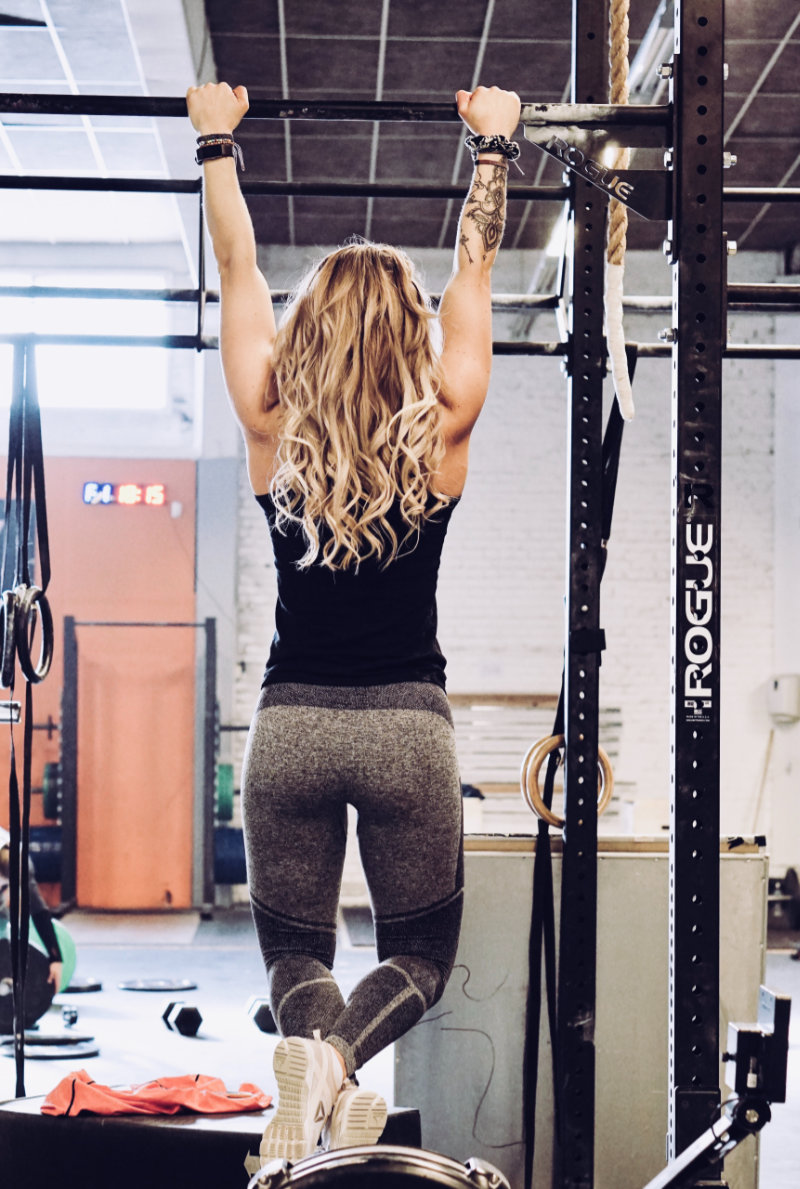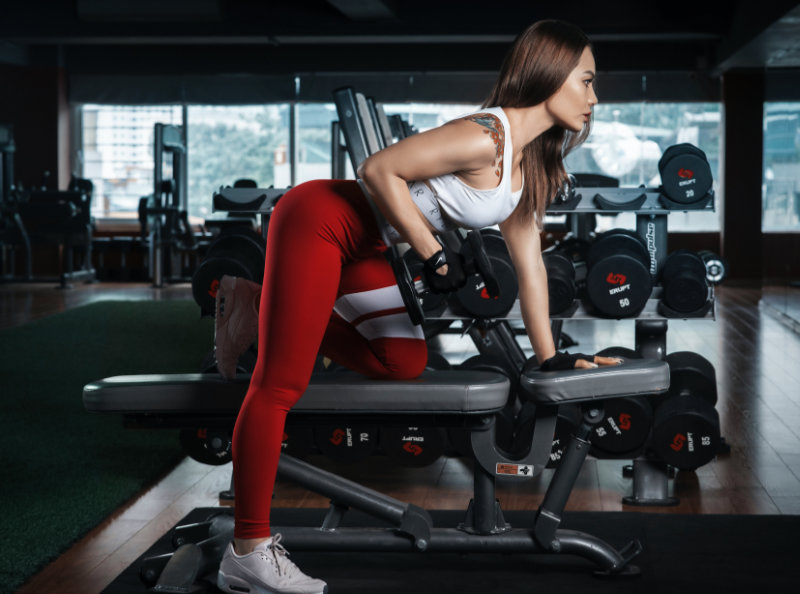If you have ever tried doing a pull up for the first time, then you know how difficult this functional fitness exercise can be. It looks easy and smooth until you are hanging on the bar with no where near enough strength to pull yourself up. This is when you get a real taste of disappointment, isn't it?
But do not let that stop you or make you give up on it. You can learn how to do pull ups at home, just like you can do other functional fitness exercises from home. All you need is to find the right instructions, follow them correctly, and stay consistent to start seeing real progress. Before we get into the details of how to do pull ups at home, there are some general facts you need to know.
First, your weight highly affects the success of your pull up. That’s an obvious one, isn’t it? This is why we encourage you to focus on losing any excess weight before getting started.
Second, progress takes time. Do not expect to be able to do pull ups after a couple of attempts. Rather, you will need to strengthen your muscles through intensive workouts beforehand.
Last, don’t underestimate the importance of back-related workouts. They are what makes or breaks a pull up. Also, please make sure your pull up bar is securely assembled and set up, and test it before using it for any workouts. You don’t want to be worried about falling and getting injured in the middle of your exercise.
That being said, it is now time to introduce you to some of our favorite pull up variations, as well as the techniques and tips to be successful at each type.
Kipping Pull Ups

As you may have noticed, kipping pull ups look very different from strict pull ups and this is due to the transfer of energy involved to push your body up past the bar. The momentum you need to succeed at kipping pull ups comes from the legs, the back muscles and the biceps.
To perform kipping pull ups, start by firmly grabbing the bar. In case you are struggling with sweaty palms or past injuries and blisters, we recommend you use an Athletic Tape to give you a better, more comfortable grip. Once your hands are on the bar, swing your legs backward as hard as you can. This will give you the momentum that pushes you forward to pull yourself up swiftly using your arms and back.
The principle behind kipping pull ups is simply the transfer of the pushing force from the initial leg swing. Thus, the harder you swing back the higher the momentum is.
Another crucial factor to master for successful kipping pull ups is timing. With enough practice, you will learn to determine the ideal moment you should pull yourself up before you swing forward way too far.
One of the common mistakes we notice most people do when performing kipping pull ups is letting their bodies follow the movement of their legs. This small detail can lead you to hit the bar with your face, or in a much worst scenario, injure your back muscles.
Since kipping pull ups require a greater level of coordination, a strong core, and upper body strength, we recommend you try it only once you are comfortable with strict pull ups.
Additionally, it is important to note that kipping pull ups can, in no way, replace a stationary pull up. So, if you are planning to include kipping pull ups in your workout plan, be sure to also include stationary pull ups in other functional fitness workouts.
Pull Ups Neutral Grip
Just like kipping pulls ups and regular pull ups, pull ups neutral grip is also one of the best exercises for the full body, with more focus on the upper back muscles.
You can do pull ups neutral grip by following the instructions below. As usual, ensure the correct execution of these steps for more effectiveness and decreased risk of injury.
- Have a strong grip of the parallel handles of the bar, with your arms kept straight and your shoulders and back pulled down.
- Pull yourself up while keeping sight of the bar. You can slightly fold your knees while doing so if you feel like that would give you more balance.
- Maintain a good posture with your chest up as you pull yourself towards the bar, and avoid swinging your knees. Keep a good breathing rhythm throughout the pull up neutral grip, by inhaling as you lift yourself and exhaling as you go down.
- Once you pull your chin over the bar, stay still for a moment and start extending your arms to descend.
This is as easy as it can get with pull ups neutral grip. But do not try it until you have enough upper body strength to comfortably complete the exercise.
Pull ups Vs. Chin Ups
Many athletes, especially beginners in functional fitness, may face difficulties differentiating between pull ups vs. chin ups. Although they might look similar, there are many differences between the two.
In general, your hands in pull ups are placed wider than your shoulder width and you use a pronated overhand grip to pull your body up with your palms facing away from you. Chin ups on the other hand require having your hands at the same width as your shoulders, and using a supinated underhand grip with your palms facing you.
These differences do not make one exercise better than the other, as each one targets specific muscles and demands different levels of strength. If you are feeling comfortable with both pull up and chin ups and are looking for a new challenge, why not try a one arm chin up? Don’t be fooled, this will challenge even the more advanced functionail fitness athletes!
An alternative to pull ups

As much as we love pull ups and would recommend them to everyone, we know that not all athletes feel the same about them or have developed enough strength to successfully perform them. Hence why we suggest the exercises below as an alternative to pull ups. Thus, you will get to engage your upper body in workouts you actually enjoy.
- Dumbbell row: This exercise focuses on the arms and upper back.
- Barbell row: This exercise focuses on the arms and back.
- Renegade row: This exercise is not only focused on the upper back muscles but also targets your whole body.
These simple alternatives to pull ups will help you develop the upper body strength you need to achieve a successful pull up.
